Common Conservation Problems
Certain materials are used frequently enough that they have become recurrent problems for the Conservation Lab. Iron Gall Ink and Tape are examples.
What is Iron Gall Ink?
Iron gall ink was in popular use from about the 12th century up until new technologies made it obsolete in the 19th century. It was easily made at home and it was permanent, which explains its popularity. When first applied the ink is a light brown or sepia color, but as it dries it turns purplish-black.
Because every individual made their own ink with their own recipe, the chemical structure of these inks can vary, but the basic components are iron and tannin, found in galls or other plant material. As a result of the iron used to make the ink, most Iron Gall Inks are susceptible to corrosion. The ink in the paper rusts the same way any metal would when it is exposed to changes in temperature and humidity. As it deteriorates over time, the chemicals released from the corrosion seep into the paper, discoloring and weakening it. Another type of damage caused by iron gall ink corrosion occurs when the writing itself falls out of the paper, usually where the ink has been most heavily used. Here is some background information on Iron Gall Ink from the Ink Corrosion Website.
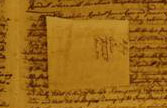
Iron Gall Ink was used so frequently and so commonly throughout history that it is a part of many valuable collections. For example, Hans Christian Anderson's manuscripts were written in Iron Gall Ink and were conserved at the Odense City Museum in Denmark. Because so many of the world's cultural and historical treasures were written or drawn in ink that has corroded over time, proper treatment is of the utmost importance.
The classification system.1
1. Good Condition: Little or no discoloration on the verso of the inked areas.
2. Fair Condition: Brown discoloration on the verso of the inked areas, but no cracks.
3. Poor Condition: Small cracks, often with small losses. When letters or areas with heavy ink start
falling out of the paper it's called "lacing."
4. Bad Condition: Extensive losses within inked areas.
Iron Gall Treatment Case Study
The binding of the book (MSA SC 5458-48-6) was in fairly good condition, as was the sewing, but the pages had shattered or split where the ink had done the most damage. The photos below show some of the damage the ink had done to the paper and show shards of paper split from the rest of the paper. Due to the ink corrosion, every time a page was turned it split in the same place.
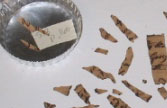
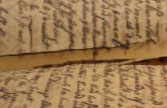
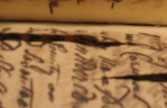
Tape
What kind of tape is okay to use? None. In as little as six months, a piece of tape causes damage that is irreversible.
Tape Removal Process
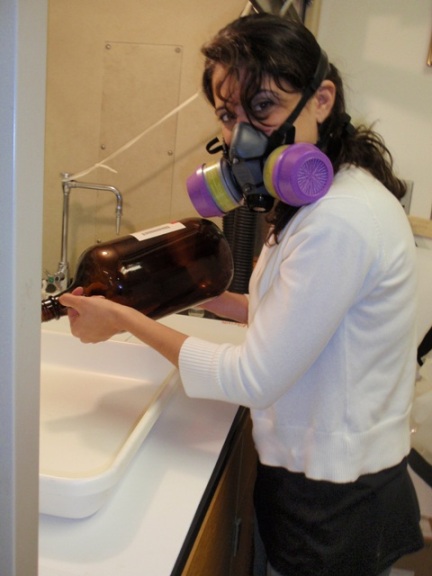
Damage resulting from tape is some of the most difficult to reverse. It can involve the use of carcinogenic chemical solvents, like acetone, tolulene, and hexane. Removing tape requires tremendous amounts of time and patience. To remove the tape, documents are first "bathed"in a solution of acetone and ethanol, requiring the conservator to work in a fume hood and wear a respirator and gloves at all times. Then the conservator must carefully peel away at the tape with mini-spatulas. Now the tape has been removed, but the adhesive remains on the paper. To remove the adhesive the conservator must gently rub the document with swabs while it is still in the solvent bath. On average, it takes 3 hours to reverse the damage caused by one inch of tape.
Preservation Pencils
Recently, the Conservation Lab acquired a Preservation Pencil that greatly reduces the amount of time and effort involved in removing most types of tape. However, tape removal is still a very time intensive and delicate process. Everyone on the Conservation staff would much rather that no tape were used at all.
The Preservation Pencil makes large scale tape removal projects more feasible.
One such project involved treating a collection of pre-Revolutionary War 18th century tax records that had been almost completely encased in tape, both front and back. There were about two dozen documents and every single one had large amounts of tape and tape damage. Without the aid of the Preservation Pencil, the removal of that amount of tape would have been too time intensive to attempt. With the help of the Pencil, we were able to remove the majority of the tape without losing vital information.
Removing tape with the pencil still takes a great deal of patience. Particularly, because the area of paper covered by the tape degrades even faster than the rest of the document, making removal of the tape a very delicate process.
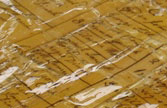
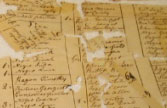
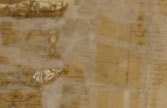
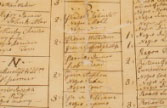
Once all the tape is gone, there is still a great deal of adhesive left behind. There are a number of ways to remove the adhesive, depending on the type of document, strength of the paper, and nature of the ink. They include a solvent bath, swabbing with solvents, or using a special eraser.
Once the adhesive is removed the document must still be mended, either using Japanese tissue and wheat starch paste or heat-set tissue.
References:
1. Reissland, Birgit, 2000. Visible progress of paper degradation caused by iron gall inks. The Iron Gall Ink Meeting, Newcastle upon Tyne, University of Northumbria, 4-5 September 2000. Postprints: 67-72.
|
This web site is presented for reference purposes under the doctrine of fair use. When this material is used, in whole or in part, proper citation and credit must be attributed to the Maryland State Archives. PLEASE NOTE: The site may contain material from other sources which may be under copyright. Rights assessment, and full originating source citation, is the responsibility of the user. |
© Copyright January 22, 2019 Maryland State Archives
